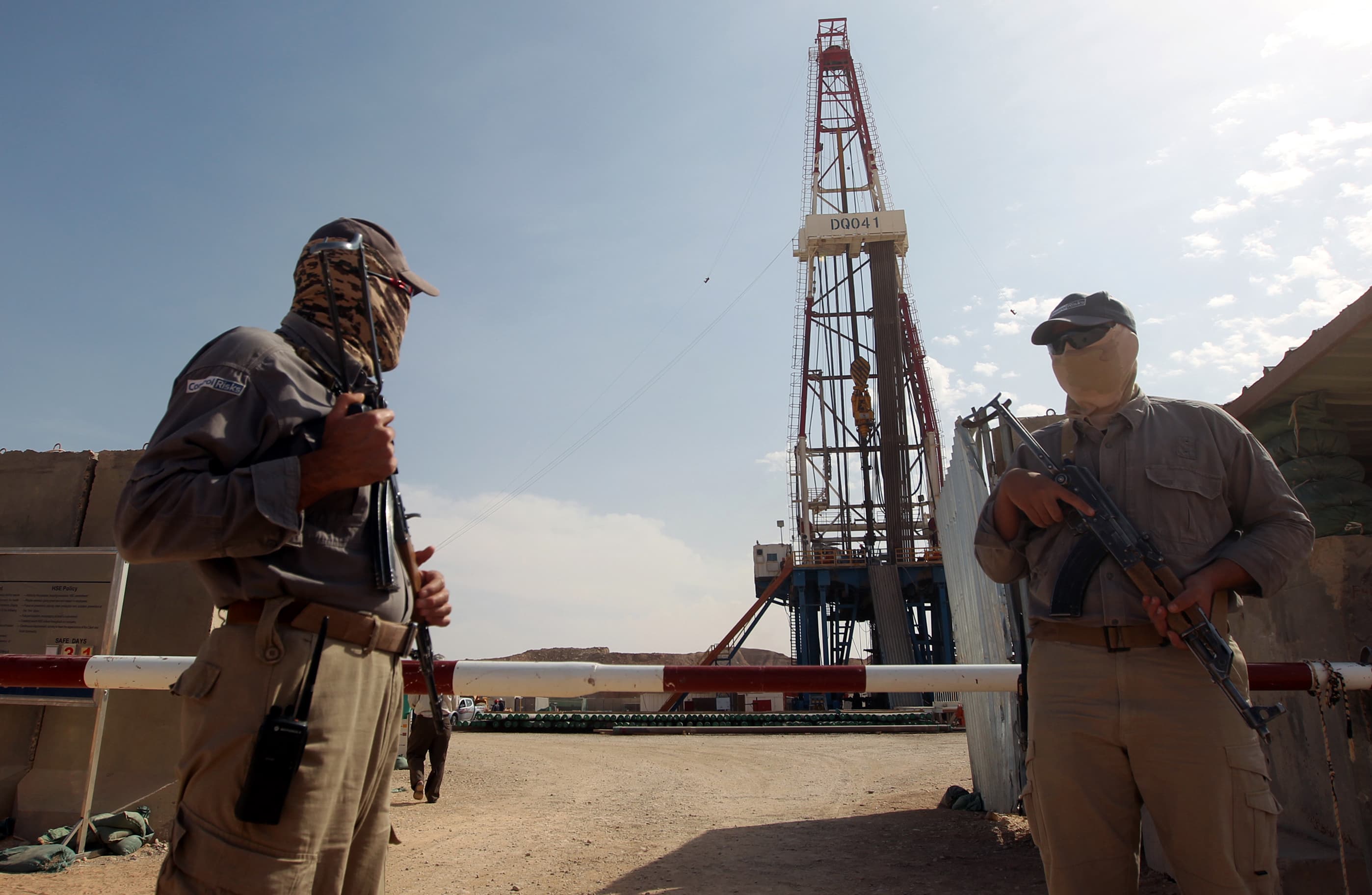Ahmad Al-Rubaye | AFP | Getty Images
Oil spikes above $100 may be a thing of the past, but prices are likely to head higher as tensions mount in the Middle East, with Citi global head of commodity research Ed Morse forecasting that Brent prices will top $70 in short order.
While the market digests the unrest caused by the United States’ airstrike that killed Iran’s top commander, the key factor that will determine oil’s next move is how Iran retaliates.
“We should not think of it as a short-term situation,” RBC head of commodity research Helima Croft said Friday on CNBC’s “Worldwide Exchange.” “Their response I think is going to be something we’ll be dealing with over the course of 2020 … I don’t believe this is over.”
International benchmark Brent crude rose as high at $69.40, before paring gains to trade at $68.08, a gain of 2.8% or $1.83. U.S. West Texas Intermediate climbed to $64.90 in early trading — its highest level since April — before pulling back to $62.49, which represents a gain of $1.31 or 2.1%.
This spike — which once would have been much larger on this kind of situation — and then retreat, demonstrates how oil has become resilient to Middle East tensions, in part due to the United States’ shale-driven surge in production.
This resiliency was on display in September after drone attacks on Saudi Arabia’s oil facilities in Abqaiq and Khurais took an estimated 5.7 million barrels of oil offline. While oil initially spiked 8% and climbed higher, prices ultimately drifted back down and a few weeks later were back at pre-attack levels after Saudi Aramco quickly restored production.
Tight supply
That said, this time around things could be different.
On Friday Eurasia Group raised its 2020 high end base case oil target to $75 per barrel, based on “rising risk to oil infrastructure in the region.” If conflict breaks out, which the firm’s Middle East and North Africa head Ayham Kamel places at 30% likelihood, prices could climb as high as $95.
While production hasn’t been impacted — or at least not yet — the lasting impact could be greater, depending on Iran’s retaliation. This could be especially true if Iran targets production in Iraq, which Morse said is one possible scenario, and Again Capital’s John Kilduff said is the “key piece to this puzzle.”
“Iraq’s southern oil output and exports via Basra hang in the balance. If that gets hit, oil prices will spike higher,” he said in an email to CNBC.
Iraq is OPEC’s second largest oil producer, pumping around 4.6 million barrels per day in December, and the country has been caught between Iran and the United States for years. Tudor, Pickering, Holt & Co.’s Michael Bradley noted that unlike Saudi Arabia, which was able to restore production quickly, the likelihood that Iraq could do the same is slim. “Certainly Saudi could quickly put oil into the markets and stabilize price, but beyond them, there really isn’t any spare capacity outside of Iran,” he said to CNBC in an email.
He added that traders aren’t pricing in “a ton of risk premium for things to get out of control” in the Middle East, despite tight supply as the United States dials back its production and crude enters a seasonally weak period of the year.
Energy Aspects’ Amrita Sen echoed this, saying that the market has become too complacent, and has failed to consider just how tight the crude market has become.
She said Friday on CNBC’s “Worldwide Exchange” that while prices could temporarily return to pre-attack levels given an incorrect perception that the world is awash in oil, “once you start to see the reaction from Iran … then prices can go back up again.”
Possible retaliation
Morse said that other possible retaliations could be “attacks on pipeline oil flows or shipping through either the Strait of Hormuz or the Red Sea,” through which more than a fifth of the world’s oil supply flows.
The airstrike comes following an especially strong fourth quarter for oil, which saw OPEC+ announce deeper-than-expected production cuts in December, and after drone strikes on Saudi Arabia’s Abqaiq and Khurais oil facilities rocked international markets.
WTI gained 10.68% in December — its best month since January 2019 — and 12.93% for the quarter. It’s 34.46% gain for the year was its best since 2016. Brent gained 5.7% in December and 8.59% for the quarter. It also had its best year since 2016, gaining 22.68%.
But 2019’s surge is still a far cry from oil’s $100-plus days, which were not that long ago in 2014. Croft said that while oil once would have spiked much higher following an event like Thursday’s airstrike, it’s now become more of a lagging indicator, with the United States’ surge in production shielding it from price volatility thanks to Middle East tensions.
Analysts at Ned Davis noted that there have been much more violent, and sustained, price swings in the past. The firm pointed to Israel’s invasion of Gaza in 2008, when prices remained 27% higher a month later, as well as a 25.9% spike one month after South Yemen’s Insurgence in April 2009.
While the Street awaits clarity on Iran’s next move, S&P Global Platts’ chief geopolitical risk analyst Paul Sheldon said that Brent is capped at about $70.
– CNBC’s Michael Bloom and Nate Rattner contributed reporting.
